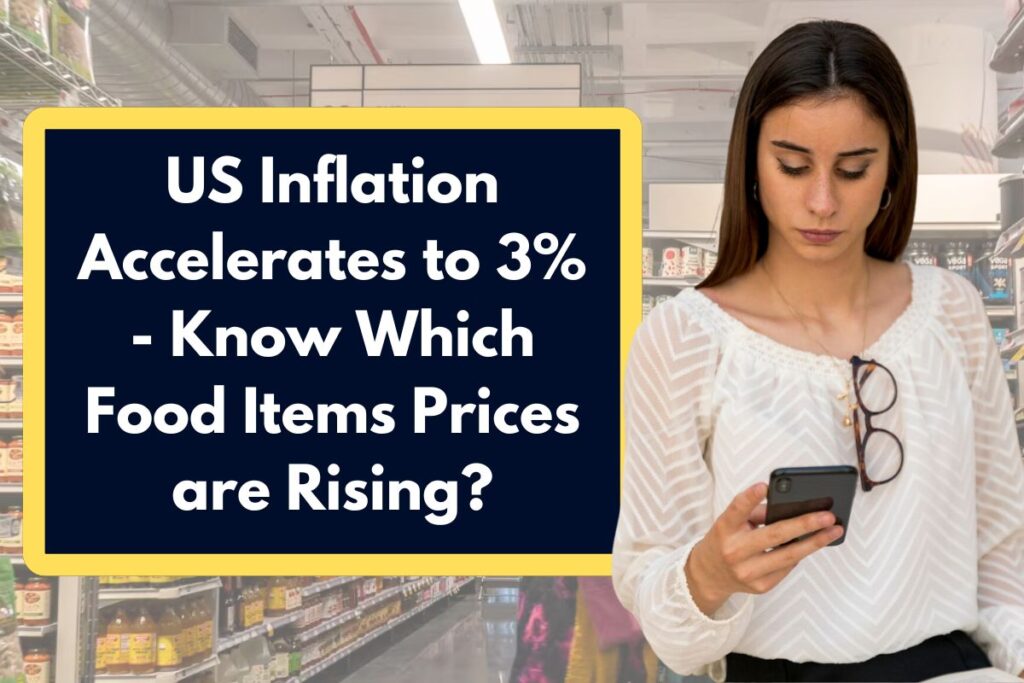The Bureau of Labor Statistics said on Wednesday, February 12, that consumer prices increased more quickly than expected in January. Inflation increased by 2.9% in December and then by 3% annually, the most since June 2024. Prices increased by 0.5% for the month, which is the biggest increase since August 2023. December saw a 0.4% increase in prices. There is no denying that Donald Trump’s immigration and tariff proposals would drive up the prices of food in the US.
The CPI climbed by 3% in the preceding 12 months, according to the U.S. BLS; however, the warning signs have already begun, rather than later. Trump, however, blamed Joe Biden for the problem. The research indicates that increasing prices for consumer basics like as food and energy prompted inflation to rise in January, as the January figure is higher than December’s 2.9% and marks the fourth straight month of annual inflation hikes. Some are concerned that indications will continue to grow.
US Inflation Accelerates to 3%
The January top-line consumer price index increased by 0.5%, while core inflation advanced by 0.4%, as a consequence of strong aggregate demand fueled by job increases and growing real incomes, which in turn supported solid demand for services, rentals, and energy.
According to data released by BLS, core pricing gained 3.3% and the index rose 3% on a year-ago basis. Prescription medicine prices increased 4.1% while the prices of child care and nursery school increased 7% at the beginning of the year, contributing to some of the increase.
But, with tariffs on the economy on the way, such price hikes were insufficient to allay mounting worries about the direction of pricing and how it might affect the course of monetary policy. What is more interesting is how these price rises will affect inflation expectations, which are the main mechanism via which inflation will continue to rise. Egg prices are the public’s and governments’ worst enemy.
Egg prices increased 15.2% in January and 55.2% from a year earlier due to a severe case of avian flu. Even if investors and other intelligent market players see through that move, it will be at their own risk, and the public would perceive that spike as fueling short-term inflation expectations.
U.S. inflation increases to 3%, groceries and gasoline prices heading higher
Last month, the prices of food, gasoline, and rent increased, which disappointed families and businesses that were already suffering with rising expenses and probably demonstrated the Federal Reserve’s determination to postpone additional interest rate decreases. According to department, the CPI climbed 3.0% in January compared to 2.9% in the same month last year. In September, it was at a 3-1/2-year low of 2.4%; it has since risen.
According to the latest data, after declining consistently for over a year and a half, inflation has persistently stayed above the Fed’s 2% objective for the last six months. The sudden spike in inflation may stifle some of the corporate fervor that followed Trump’s election on the basis of his pledges to lower taxes and regulations. In Wednesday’s midday session, the Dow dropped 400 points. Bond yields increased, which indicates that speculators anticipate rising interest rates and inflation.
As expected, the impact of this food is increasing the demand for baked products and other things related to the supply chain, which is also being impacted by the 2% increase in gas prices from December to January. Similar to this, other staples like coffee have seen substantial price hikes as a result of climate-related issues in the nations that produce them; this pricey bean has increased by 7% in the past year.

Egg prices rose 15% in one month
Unfortunately, the Consumer Price Index, which measures the upward or downward movements of every item in the basic basket of goods and services, indicates that staple foods like eggs are seeing an exceptional increase in price. However the prices of eggs is skyrocketing. A surge in bird flu infections has impacted eggs; in January, the disease afflicted almost 19 million chickens that produce eggs. Since December, the price of eggs has increased by 15.2%, the most since June 2015.
Overall, the food index increased by 2.5 percent every year. In comparison to January 2024, core inflation, which includes volatile food and energy prices, increased by 3.3%. Auto insurance is another pricey sector, with an annual increase of about 12%. That is the lowest yearly gain in about two years, indicating much-needed cooling, even if the shelter index is still up 4.4% for the year.
Policy considerations
U.S. families, loaded with cash and expecting growing earnings, continue to approve spending increases of at least 3%. This strength supports what has long been a consistent narrative about inflation. Additionally, it supports the notion that the Federal Reserve will not lower its policy rate in the near future.
Given the continuous policy uncertainty surrounding tariffs and immigration, there is a danger that food price volatility, sticky service prices, and obstinate rents may contribute to increased short-term inflation expectations. If those expectations go through, it will drive longer-term expectations to grow, and that is how we get from one-time price disruptions to a continuous increase in inflation.
| Official Website | Click Here |
| Homepage | KeralaCoBank.Com |
Samarth Choudhary is a Chief Editor at keralacobank.com. He has overall editorial experience of 10 years in online media. He has completed his graduation from University of California and masters in Finance from University of Dallas in year 2010. His major interest and expertise is in Finance, Taxes, Government Aid and Schemes. His Major focus is to help users to get relevant information which are published on keralacobank.com in easy and precise form.

